CHAPTER < ELEVEN – HOLDING THE KEY
“All that we can do is to keep steadily in mind … that each at some period of its life, during some season of the year, during each generation or at intervals, has to struggle for life and to suffer great destruction.” Charles Darwin
In direct proportion to the immense challenges that lie before us, lies the potential for humankind to come up trumps with an array of ingenious solutions such as the world has never seen before. At the very least these challenges are forcing us, with a sense of urgency, to rethink many of our basic assumptions.
HIV/AIDS has frightened us into revising previously-old-fashioned injunctions, such as “no sex before marriage” and marital or one-partner fidelity, as the only sure-fire ways of avoiding a lingering and painful death. The escalating threat of terrorism, sparked by the 11 September 2001 terrorist attacks on the World Trade Centre in New York and the Pentagon in Washington, and the conflict in Iran and Iraq have forced us to re-examine the overall threat to humanity that no-holds-barred biological, chemical or nuclear war would inflict should regional terrorism explode into full-scale warfare across the globe. And the morality of DNA cloning has compelled us to reconsider our right to play God, before we cross over an irretrievable boundary with the reproduction of a human embryo in a laboratory.
 As with so much else going on at this time, these and many other issues have required our immediate attention. However there are few items on the human agenda as pressing as that of global ecological preservation. It has been and continues to be, an issue of such vital importance, that it is forcing us to re-evaluate the very attitudes and beliefs that underpin our civilisation.
As with so much else going on at this time, these and many other issues have required our immediate attention. However there are few items on the human agenda as pressing as that of global ecological preservation. It has been and continues to be, an issue of such vital importance, that it is forcing us to re-evaluate the very attitudes and beliefs that underpin our civilisation.
In a way this is probably a first for humanity: making an about-turn before it is totally, completely, absolutely necessary. Of course it could and should be argued that the scale of worldwide environmental devastation facing us at this time makes it totally, completely, absolutely necessary right now.
However, as it is a facet of human nature not to believe something until we see evidence of it with our own eyes, with few of us being able to travel extensively enough to gain an overall perspective and see firsthand the effects of widespread ecological damage, this is a situation beyond our immediate grasp. We have to take it on hearsay, with the written word, radio reports and television images never having the impact of the real circumstances. How can they?
For to see the image of a forest burning in a black and white photograph on a newspaper or magazine page, or within the small detached square of a television screen is not to hear for oneself the roar of crackling flames or the squeals of terrified creatures fleeing for their lives. It is not to feel the searing heat of the fire as it scorches everything in its path. It is not to see burnt-out husks of tortoises and other small creatures too slow on their feet to avoid the conflagration. It is not to smell the stink of burning vegetation or touch the spiky cindered stalks of dead grass. And after the fire has burnt itself out, it is not to see hungry animals wandering aimlessly over the smoky blackened landscape in a fruitless search for food. In other words the media image of a burning forest is an abstract impression that engages us for a mere minutes-long time span. It cannot accurately convey the devastation of a real-live inferno burning in front of us for hours.
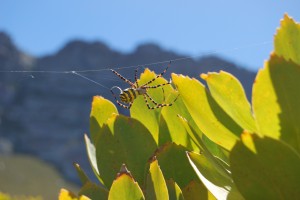 This is how much of the information that comes to us about our world is received: as brief, second-hand, abstract images that do not have the gut-grabbing, sensory-engaging immediacy of the real situations. And yet in spite of this, and despite our removal from the natural world, we are still connected enough to our environmental heritage for images such as these to have a powerful impact on our collective consciousness. So powerful in fact that they have inspired a groundswell of concern, with public personalities as diverse as government leaders and rock stars putting the clout of their fame behind ecological issues in order to motivate increased public awareness and with it, hopefully, solutions to environmental problems.
This is how much of the information that comes to us about our world is received: as brief, second-hand, abstract images that do not have the gut-grabbing, sensory-engaging immediacy of the real situations. And yet in spite of this, and despite our removal from the natural world, we are still connected enough to our environmental heritage for images such as these to have a powerful impact on our collective consciousness. So powerful in fact that they have inspired a groundswell of concern, with public personalities as diverse as government leaders and rock stars putting the clout of their fame behind ecological issues in order to motivate increased public awareness and with it, hopefully, solutions to environmental problems.
It is remarkable that the environmental movement has grown to the point it has within such a short period of time. It is a proud example of our ability to make a dramatic change of direction in the relative blink of an eye. Responding to the seriousness of a situation with battle stations blazing, in an all-out attempt to solve a pressing problem.
But which was the point at which the environmental movement began? Was it the celluloid image we saw of a deadly mushroom cloud reaching high into a morning sky that first awakened our fear? Or was it a shared sixth sense even before then, an ancestral instinct awakened after a long slumber that alerted us, like good sons and daughters sensitive to the needs of their beloved parent, to the agony of Mother Earth? Whatever it was, many people all over the world felt it and responded with alacrity to the call: people like Jim Bohlen, Irving Stowe, and Paul Cote, who founded the Greenpeace movement.
Fighting the Good Fight
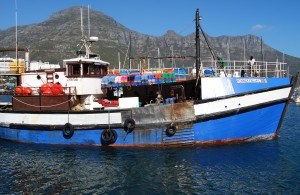 Greenpeace started in a modest way with this small group of determined men hiring a battered old boat and sailing it into the area of a nuclear test site. Their plan was simple: they would not try to interfere directly in the test in any way, they would simply “bear witness” to the event by anchoring their boat close to the test site.
Greenpeace started in a modest way with this small group of determined men hiring a battered old boat and sailing it into the area of a nuclear test site. Their plan was simple: they would not try to interfere directly in the test in any way, they would simply “bear witness” to the event by anchoring their boat close to the test site.
Bearing witness is a Quaker concept of passive resistance, whereby opposition is registered simply by one’s presence and along with direct action, it is the cornerstone philosophy of the movement. Since that first brave act of resistance, Greenpeace has grown into a respected international organisation, counting its membership in the millions around the globe and expanding its operation, from its small beginning in the 1970s of one battered borrowed boat, to ownership of a sophisticated fleet of powerful ocean-going vessels and river craft. It has also enlarged its coverage of concerns to include a considerably expanded range of environmental issues, from toxic waste disposal in Antarctica to kangaroo slaughter in Australia, grabbing public attention with campaigns that are bold and imaginative.
At first most Greenpeace protesters seemed with their long hair, beards and jeans to be defiantly anti-establishment, venting their frustration on a system that did not accept them. However this was misleading as many of the members were then and are now, highly educated people working in respected professions: people such as lawyers, psychologists, geologists, social workers, medical practitioners and scientists. What this diverse group of activists has in common is a passionate commitment to the environmental cause and a willingness to show outstanding courage and perseverance in the face of enormous odds. Often putting their personal safety at risk in their David and Goliath struggles, these volunteers give selflessly of their time, energy and expertise. Some members have even put their personal assets at the disposal of the movement when needed.
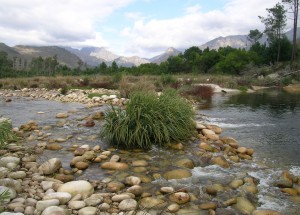 The message of Greenpeace is simple and clear. The organisation believes that everyone in the world has the right to clean water, fresh air and a safe future. And the movement has taken it upon itself to safeguard these precious commodities in order to ensure survival for all. But Greenpeace, as powerful and visible a force as it has become, is just one of a growing number of environmental organisations which have proliferated around the globe during the past decades. There are now literally hundreds, and maybe even thousands of organisations safeguarding different aspects of the natural world. From huge professionally run, international agencies dealing with a broad base of environmental issues with memberships counted in the millions. To small home-based trusts with memberships of hundreds; some crusading for just one niched item of concern, such as the trust that has been set up in Britain to preserve the last remaining population of wild camels found in the remote Gobi Desert.
The message of Greenpeace is simple and clear. The organisation believes that everyone in the world has the right to clean water, fresh air and a safe future. And the movement has taken it upon itself to safeguard these precious commodities in order to ensure survival for all. But Greenpeace, as powerful and visible a force as it has become, is just one of a growing number of environmental organisations which have proliferated around the globe during the past decades. There are now literally hundreds, and maybe even thousands of organisations safeguarding different aspects of the natural world. From huge professionally run, international agencies dealing with a broad base of environmental issues with memberships counted in the millions. To small home-based trusts with memberships of hundreds; some crusading for just one niched item of concern, such as the trust that has been set up in Britain to preserve the last remaining population of wild camels found in the remote Gobi Desert.
Exceptional efforts by concerned individuals have also highlighted specific areas of need. One such effort was the “Ride for the Rhino” campaign. This daring campaign was conceptualised by two deeply committed young Zimbabweans, Julie Edwards and Charlene Hewat, who undertook to cycle a staggering distance of 22 000 kilometres over a period of 18 grueling months, from Glasgow in Scotland to Harare in Zimbabwe, in order to bring to world attention the plight of the black rhino. Their courageous story is told in their book Extinction is Forever.
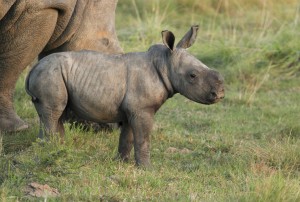 Enduring sweltering heat, pedaling over soft desert sand, suffering exhaustion and thirst, braving the threat of lions and the frustration of punctures, these two valiant young women succeeded in highlighting the fact that, from a population size of over a million individuals in the 1960s; by the 1980s, the world’s black rhino population had become seriously endangered, teetering towards extinction. The reason for this dramatic population decline was due to the fact that these great prehistoric-seeming beasts were being relentlessly slaughtered for their horn, which was sold illegally to shady merchants to make dagger handles in the Yemen and medicines in the East.
Enduring sweltering heat, pedaling over soft desert sand, suffering exhaustion and thirst, braving the threat of lions and the frustration of punctures, these two valiant young women succeeded in highlighting the fact that, from a population size of over a million individuals in the 1960s; by the 1980s, the world’s black rhino population had become seriously endangered, teetering towards extinction. The reason for this dramatic population decline was due to the fact that these great prehistoric-seeming beasts were being relentlessly slaughtered for their horn, which was sold illegally to shady merchants to make dagger handles in the Yemen and medicines in the East.
At the start of the “Ride for the Rhino” cycle, Julie and Charlene set out to achieve the ambitious goal of widespread awareness for their campaign. This they accomplished through the extensive media coverage that their marathon cycle was able to generate. However in order to increase credibility and cachet for the campaign, they enlisted the support of many international personalities: personalities as diverse and world-renowned as His Holiness the Pope, His Royal Highness The Duke of Edinburgh, Prince Bernhardt of the Netherlands, the then British Prime Minister Margaret Thatcher, Dr Kenneth Kaunda, rock star Phil Collins and well-known wildlife conservationists George Adamson and Daphne Sheldrick, who were all willing to be associated with the cause of the endangered black rhino, unstintingly giving of their time and assistance and striving in the process to “defend the undefended and secure for the vulnerable invulnerability”.
What a long way we have come! From a species that over millennia wantonly exterminated other species without a backward glance. To millions of people across continents and national boundaries who now have conservation as a cornerstone concern, passionately fighting for the protection and preservation of the natural world, and the wild creatures that live within it by whatever means necessary.
Whether this is by providing underpasses or bridges for migrating caribou where oil pipelines disrupt their long northerly trek to summer grazing grounds, or by dangerously zigzagging in small rubber inflatables across the bow waves of huge whaling vessels ploughing through open sea.
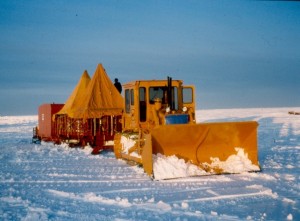 By battling the elements of cold, wind and snow in the clearing-up of human debris from the seashores of Antarctica and the slopes of Mount Everest, or by harnessing public indignation through clever media campaigns.
By battling the elements of cold, wind and snow in the clearing-up of human debris from the seashores of Antarctica and the slopes of Mount Everest, or by harnessing public indignation through clever media campaigns.
Or simply by adding an individual voice to the collective voice of the concerned people of the planet through membership and participation in environmental causes; speaking up through public protests, political action, legislator lobbying, corporate policies, consumer demands, information campaigns, petitions, internet exposés, publications, conferences and boycotts.
Abraham Lincoln stated that, “With public sentiment nothing can fail; without it nothing can succeed”. It is fervently hoped that the public sentiment that focuses on the preservation of the natural world will continue to grow to a point where it can never again be ignored. And may this profound ideological shift in our collective global conscience ensure that the world never again knows the killing fields of the North American bison or the shooting parties of the maharajas who indolently whiled away leisure hours with the purposeless slaughter of tigers.
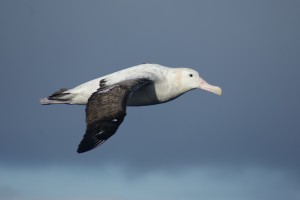 Let there never again be huge piles of elephant tusks burnt in fierce bonfires to make a point against the poaching of ivory. May whales and other diverse marine species as well as species of the land and air, never again be brought to the point of extinction through extermination or wholesale destruction of their habitats.
Let there never again be huge piles of elephant tusks burnt in fierce bonfires to make a point against the poaching of ivory. May whales and other diverse marine species as well as species of the land and air, never again be brought to the point of extinction through extermination or wholesale destruction of their habitats.
May voiceless creatures never again be intentionally exploited to satisfy human vanity, selfishness and greed. And may our combined human voice speak up, no shout for them, in a deafening roar of public outrage, with the fear of social and political ostracism preventing such atrocities from ever occurring again in the future…